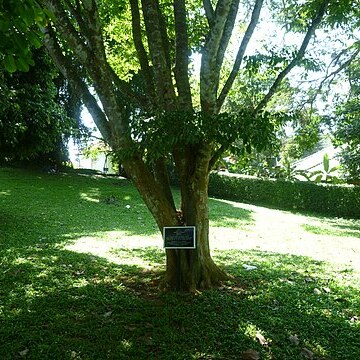Petals white, greenish-white or violet, with dark purple veins, the standard with a purple or yellowish blotch near the base; standard suborbicular with a short claw, the limb usually reflexed; wings with a short claw up and a well-developed auricle at the base of the limb; keel petals with a claw up and a well-developed auricle.
Pods indehiscent, variable in size and shape, ± flat, broadly oblong to linear-oblong, ± winged along the upper margin, slightly woody, glabrous and smooth or rarely pubescent, the proximal part often constricted to form a false stipe, the longer pods often also constricted about the middle.
Leaves with (5)7–12(13) leaflets, which usually appear alternate but are occasionally in opposite pairs, lateral leaflets with a single stipel at the base, terminal one with 2 usually unequal stipels.
Inflorescence a terminal panicle or rarely a simple raceme, sparsely to densely brown-or greyish-pubescent or subglabrous; bracts small, ± linear-oblong, caducous; bracteoles similar, caducous.
Calyx campanulate below, with 5 teeth 2–4 times as long as the campanulate part, the upper 2 remaining connate for most of their length, the whole calyx eventually falling as one piece.
Seeds flat, oblong to suborbicular, reddish, with a small hilum; radicle short, straight.
Ovary subsessile, pubescent with a long glabrous stipe.
Flowers with a small hypanthium (receptacular disc).
Large shrubs or more usually trees.

